Archived Fire Damage Blog Posts
Fire Safety Tips for Every Room of the House
6/23/2022 (Permalink)
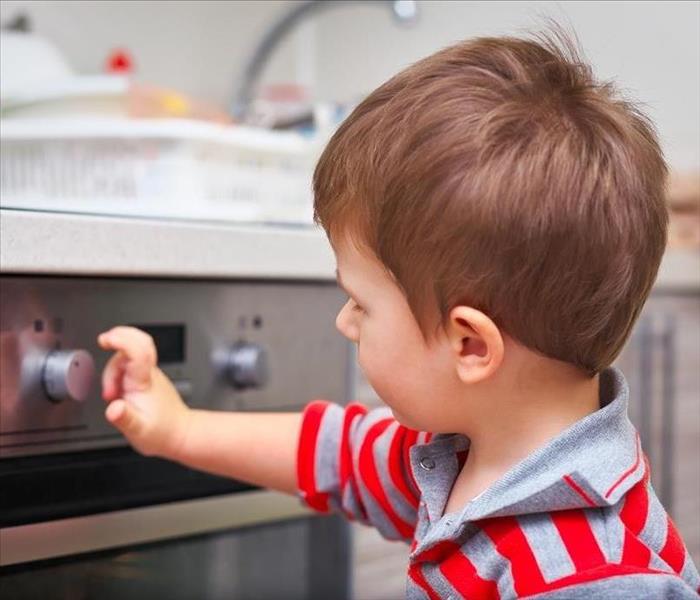 You can count on SERVPRO of Gordon, Murray, & South Whitfield Counties to help you recover after a house fire.
You can count on SERVPRO of Gordon, Murray, & South Whitfield Counties to help you recover after a house fire.
The unfortunate truth about household fires is that they can start for a myriad of reasons. From cooking incidents to improperly stored flammable items, many accidents can lead to a fire, which is why it is so vital to practice fire prevention throughout the house.
Making sure that you and every member of your household are aware of common fire hazards can help you all go about your lives with safety in mind, which drastically reduces the likelihood that you will wind up with a fire on your hands. Read on to learn about fire safety tips you should know for every room.
Kitchen Fire Safety Tips
Kitchens are the room in the home where a fire is most likely to break out, so it is extra important to be vigilant. Make sure there is nothing flammable near your stove or oven (including curtains, dish towels and potholders) and that food is never left unattended on the stove. It is also important to keep a fire extinguisher handy in case of any flare-ups, and ensure everyone in the home knows how to handle a grease fire as opposed to a regular fire.
Family Room Fire Safety Tips
While family rooms do not typically contain as many fire hazards as other areas of the home, there are still risks to consider. Don’t leave candles burning unattended, and if you have a fireplace, make sure it is inspected regularly by a certified professional. For electronics, be sure to not overload electrical outlets and replace cords and cables if they become frayed or worn out.
Garage and Storage Fire Safety Tips
Storage areas such as garages or basements can often become cluttered, which can lead to an excess of fire hazards. Make sure any flammable materials, such as lighter fluid or chemicals, are stored properly and are not able to get too hot in the summer months. Also be certain that these areas have clear and accessible exits free from clutter that could block someone’s path should they need to escape quickly.
*If you have damage to your home due to a house fire, you can count on us to help. Get in touch with us today to learn more about how our fire restoration services work.
Fire Safety Tips for the Whole Family
6/7/2022 (Permalink)
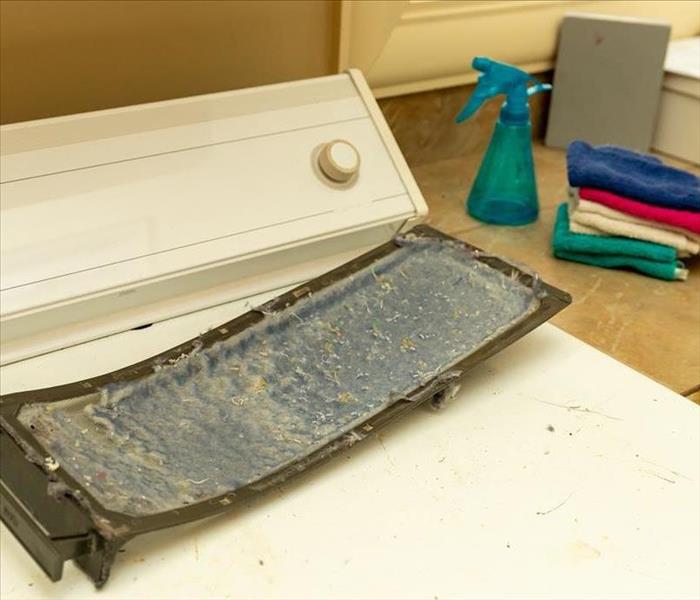 Take the time to implement these fire safety tips to help keep your family safe.
Take the time to implement these fire safety tips to help keep your family safe.
Fire safety is such an important thing for any household. House fires can be dangerous and traumatic, causing significant household damage and putting anyone in the vicinity directly in
harm’s way. Fortunately, fire safety is also a goal that the entire family can get involved with, keeping everyone more invested in safety and more prepared, just in case.
Many fire safety tips are things the entire family can participate in, which makes it a great family activity. Depending on who is in your household, it may be necessary to adjust some of these tips accordingly—for example, toddlers may have a great time drawing escape plans, while older kids may be more suited to smoke detector test duty.
However, we hope these general guidelines are helpful in getting everyone on the same page
for your home’s fire safety.
Fire Safety Tasks for Young Children
**Drawing an escape route.** Escaping quickly is key when it comes to a house fire, so an escape plan is a must. Young children can often be helpful here, drawing lines from each room
to indicate every exit.
**Being accountable for hazards.** Unattended candles, space heaters and cooking food can all be major fire hazards. Oftentimes, young children can make great safety accountability buddies,
calling out these hazards when they notice them.
Fire Safety Tasks for Older Children
**Checking smoke detectors.** Smoke detectors should be tested monthly, which can often be a great chore for preteens and teens in the home.
**Managing fire escape drills.** It is important to have a fire escape plan, and just as important to practice it regularly. Older children can be great at managing these drills, from planning them
out to debriefing as a family in order to see where there may be room for improvement.
**Cleaning out the dryer lint trap.** If your older children do their own laundry, it is important that they understand the importance of cleaning out the dryer lint trap. This is a commonly overlooked fire hazard, but the lint can heat up while the dryer is running and lead to a fire.
*If you have household damage due to a fire, we are here to help. Contact us today to learn more about our fire restoration options or get in touch 24/7 for a rapid response.
Fire Safety & HVAC Maintenance
4/21/2022 (Permalink)
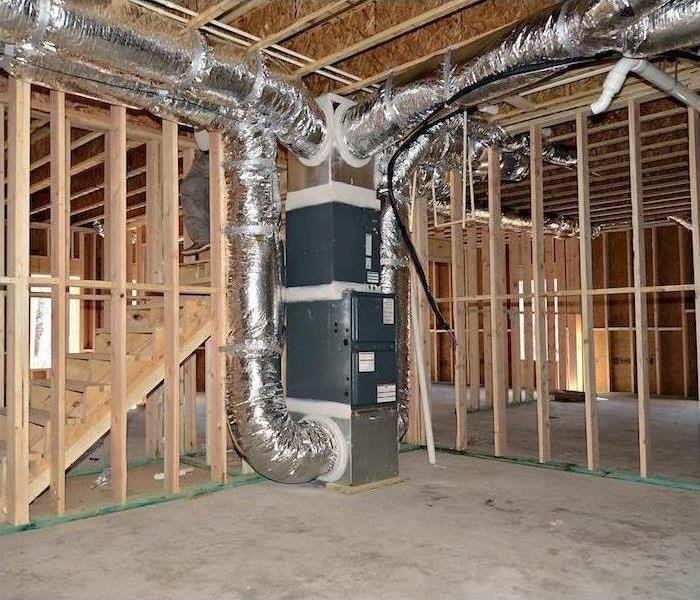 If fire should become a problem, contact the pros in green, SERVPRO of Gordon, Murray, & S. Whitfield counties.
If fire should become a problem, contact the pros in green, SERVPRO of Gordon, Murray, & S. Whitfield counties.
Being a responsible homeowner means taking care of the things that take care of you. Your HVAC system is always there, and there are few (if any) days per year in our area where you aren’t relying on it to keep your home comfortable. It often goes unappreciated—that is, until something goes south or stops working.
There are also some important fire safety concerns of which you need to remain aware, particularly as winter comes in and your HVAC switches to heating mode. Don’t let your source of comfort turn into a source of disaster.
Here’s what you need to do to make sure your HVAC system and furnace are running safely this fall and winter.
Routine Maintenance
Ideally, your HVAC system should be checked twice a year for any present or upcoming issues. A professional can see problems coming and head them off before any danger is presented.
Things like aging or fraying wiring can become fire hazards that are exacerbated by the extended use of HVAC systems during less pleasant times of the year.
Duct System Circulation
Overworked heating systems are dangerous heating systems, and one thing that can quickly cause your system to work too hard is allowing your ductwork to become or remain clogged. Poor circulation or ventilation can cause your furnace to overheat.
It’s recommended that you have your duct work cleaned every three to five years, and we can help with that.
Declutter Your Furnace Area
If your furnace is located in a designated area, or it’s in the corner of a basement or garage, make sure the two-foot radius around it is clear of clutter. Radiating heat (and certainly direct contact) from the furnace can cause flammable materials to ignite. Resist the urge to use your furnace area for storage.
Install Carbon Monoxide Detectors
If your furnace is gas-powered, carbon monoxide detectors can be as important for you as smoke alarms. The gas in your furnace is odorless, and you may not notice a leak until it’s too late. A detector can give you the assurance that things are running smoothly.
In addition to your regular fall maintenance, make sure to have your heating unit examined to give yourself a comfortable, fire-safe fall and winter season.
If fire should become a problem at home, we can help you with restoration and recovery. Contact SERVPRO to get the pros in green working for you right away.
Tips For Recovering After a House Fire
4/11/2022 (Permalink)
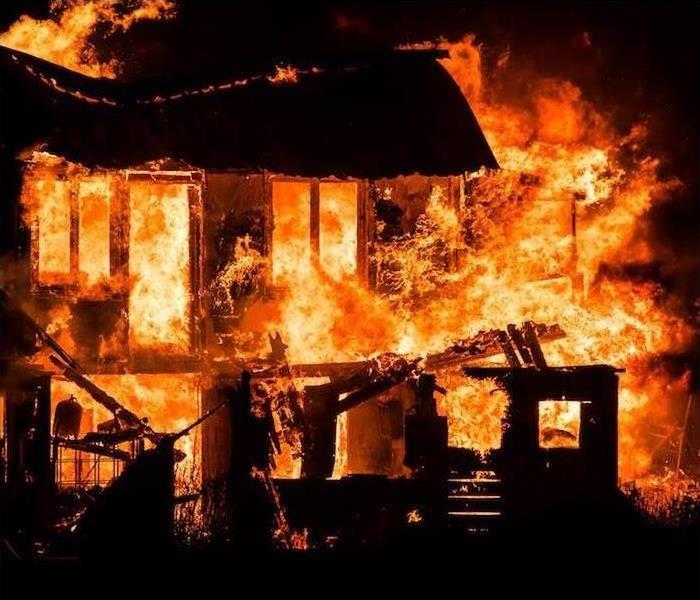 House fires trend to peak during the winter. SERVPRO of Gordon, Murray, & S. Whitfield Counties is available 24/7 in the event of an emergency.
House fires trend to peak during the winter. SERVPRO of Gordon, Murray, & S. Whitfield Counties is available 24/7 in the event of an emergency.
No one likes to think about suffering a loss like a house fire, but it’s a reality for millions of American families every year. House fires aren’t a seasonal risk to your home, but they do happen more frequently during the winter months.
If your family suffers a house fire, even one that does extensive damage, you can take steps to recover what you can from your home and recover emotionally, too. These tips can help you start the restoration process and help you deal with the aftermath of a house fire.
Taking the First Steps
The American Red Cross offers the following tips to help you in the immediate aftermath of a house fire.
After you’ve gotten everyone out of the house and treatment for any injured people or pets, then these are your next steps:
Let your loved ones know you’re safe. This is an important step, especially when news of a fire or issue can spread quickly.
Don’t go back into your home until it’s secured. The authorities will let you know when it’s safe to go back to your house. Please don’t go in there before because it can be unsafe.
Get in touch with your insurance company. You’ll want to let them know what happens to get the restoration process started.
Tips for Dealing With Emotions
It’s normal to feel a wide range of emotions after your home suffers a fire. They can range from grief to anger to depression. The American Psychological Association offers this advice to help you begin the process of recovering emotionally.
Find ways to reduce your stress. That can include exercise, meditation and deep breathing.
Don’t make major life decisions. It’s smart to avoid switching jobs or making other major choices while dealing with these complicated emotions.
Talk about your feelings. Whether you choose a therapist, family members or a close friend, it’s smart to talk to someone about what’s going on.
Don’t set expectations. There is no way you “should” be dealing with these issues. Instead, do what you can and be kind to yourself.
Take good care of yourself. Eat balanced meals and get plenty of sleep. It will help you better deal with a stressful situation.
If your home is damaged due to a fire or any other cause, you can always count on us for restoration assistance. We have crews who are available 24⁄7 in the event of an emergency. Contact us at any time to learn more about our restoration services and how we can help.
SERVPRO's Process for Fire Restoration
4/2/2022 (Permalink)
 When your home or business endures fire damage, you can count on SERVPRO of Gordon, Murray, & S. Whitfield from start to finish.
When your home or business endures fire damage, you can count on SERVPRO of Gordon, Murray, & S. Whitfield from start to finish.
After a fire strikes your home or business, you’re left with damage from the fire as well as water saturating everything from the firefighting efforts. None of that would be a surprise to our experts here at SERVPRO, as we have the specialized fire restoration expertise to return your house to its pre-fire state.
Every fire damage situation is unique and necessitates a unique remedy, but the overall procedure remains the same. The following is how we will handle a “normal” fire damage situation.
Initial contact. We are on call 24 hours a day and seven days a week, including all holidays. Disaster doesn’t wait for office hours to strike, and we don’t wait to respond. When you contact us, the restoration procedure starts. Our experts will ask a number of questions about the fire damage so that we can get started immediately with the necessary equipment and resources.
Inspection. To establish the degree of the fire, water, smoke and soot damage, we will thoroughly check and test every room. By doing this, we are able to formulate the proper strategy. Fires can cause the air quality to be unsafe, so it’s important not to re-enter the property until experts have determined it is safe to do so.
Water removal. If there is water damage present as a result of firefighting efforts or sprinkler systems, we will begin the water removal procedure immediately to ensure the bulk of the water is removed. If there is any remaining water, it will be removed using dehumidifiers and fans, and the drying process will begin from there.
Cleaning. SERVPRO removes smoke and soot from ceilings, walls and other surfaces using highly specialized state-of-the-art equipment and processes. We’ll clean up all of the fire-damaged items and areas that can be cleaned and repaired. We will also work to return your possessions to their pre-fire state by applying a number of cleaning processes. We can clean and restore electronics, documents, upholstery and more. We also specialize in industrial air scrubbers and fogging equipment to eliminate odors.
Restoration. If during the cleaning process we determine that certain areas of your property cannot be cleaned, we also provide comprehensive restoration and rebuilding services. Restoration and rebuilding efforts include everything from modest repairs like drywall replacement, painting or carpet installation to substantial repairs like the complete rebuilding of different areas or rooms in your home or property.
When your home or business endures fire damage, you can trust that SERVPRO of Gordon, Murray, & S. Whitfield will be ready to be a helping hand and will get your home restored quickly and thoroughly to its pre-fire condition.
A Fire Safety Checklist for Your Household
2/3/2022 (Permalink)
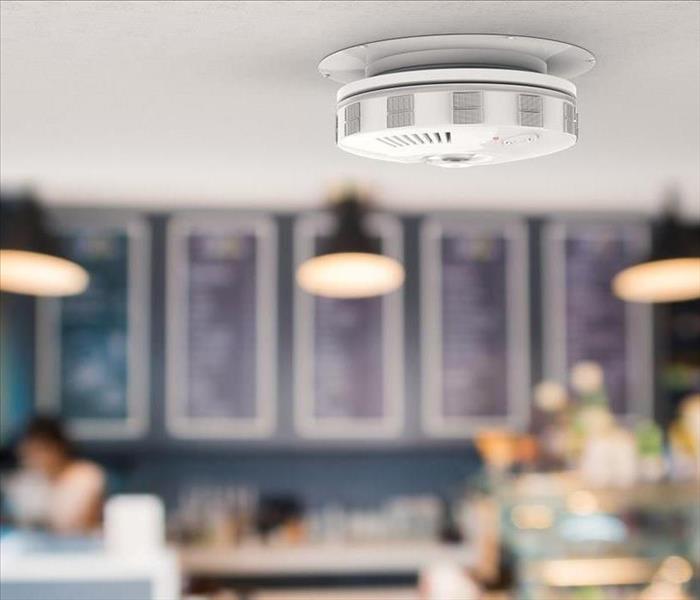 SERVPRO of Gordon, Murray, & South Whitfield Counties is on standby to help you create your Emergency Ready Plan.
SERVPRO of Gordon, Murray, & South Whitfield Counties is on standby to help you create your Emergency Ready Plan.
It is important for any household to practice fire safety as a regular part of their routine. House fires can be both devastating and dangerous, and on average, those in the household will have less than three minutes to escape should a fire begin.
Fortunately, by being vigilant about the prevention of house fires, you can reduce the likelihood of you ever having to experience one. While there is no way to completely eradicate your risk, there are plenty of steps you can take to make your home less susceptible to accidental fires breaking out.
A Checklist for Household Fire Safety
Practicing fire safety is a great way to reduce your risk of experiencing a fire at your home. By referencing this simple checklist, you can be sure you are taking necessary precautions to keep your household safe.
**Smoke Alarms**
* Ensure that you have smoke alarms on each level of the home and in every sleeping area.
* Test smoke alarms each month and replace batteries as needed.
* Note the install date for all alarms and replace after 10 years, even if they are still operational.
**Cooking Safety**
* Be sure to never leave the stove or oven on unattended.
* Keep flammable items, such as towels and wooden utensils, three feet from the stove.
* Store a fire extinguisher prominently in the kitchen.
* Understand the difference between grease fires and other types of fires, and know the methods for extinguishing each.
**General Safety**
* Be sure your household has a fire escape plan that you practice at least twice per year.
* Ensure that every area of your home has at least two exits.
* Store any flammable chemicals in accordance with their label recommendations.
* Keep matches, lighters and other flammable objects away from young children.
* Do not leave candles lit if they are unattended.
* Keep anything flammable at least three feet away from candles, space heaters or other sources of heat.
**Electrical Safety**
* Never overload electrical outlets or extension cords.
* Replace any frayed cords or wires immediately.
* Plug appliances and any heat-generating items directly into the wall, not into extension cords.
* If wall outlets ever feel warm to the touch, stop using them immediately and call an electrician.
*If you have damage from a fire, you can count on us to help. We are here 24/7 for restoration—contact us today to learn more about our processes.*
Creating Your Home’s Fire Safety Blueprint
2/3/2022 (Permalink)
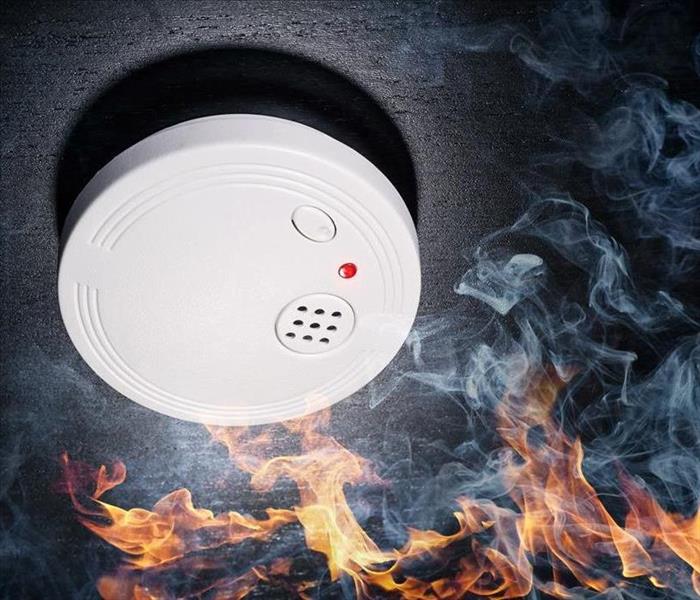 SERVPRO of Gordon, Murray, & South Whitfield Counties is ready 24/7 to respond to your emergency needs.
SERVPRO of Gordon, Murray, & South Whitfield Counties is ready 24/7 to respond to your emergency needs.
Increasing the fire safety of your home is a great goal. House fires can be traumatic and dangerous events, causing extensive property damage as well as injury or loss of life. However, if you have not previously considered your options for fire safety, getting into the habit of fire prevention around the house may seem like a daunting task.
The good news is that improving your home’s fire safety is ultimately quite a simple task. Once you assess where your gaps in fire prevention efforts are, you can implement simple new habits to better protect your home.
Below, we will help you identify where you could improve fire safety so you can figure out exactly what you can do to help keep your household safer from fires.
Determining Where to Improve Your Fire Safety at Home
**Consider personal safety first.** While fire prevention is quite important, the first thing you should do from a safety perspective is to consider how to protect your family if a fire does start. One of the best things you can do is install smoke alarms throughout the home and test them monthly to ensure they are operational. That way, anyone in the home will be alerted right away if a fire starts and can quickly get to safety. Additionally, you should draft a fire evacuation plan for your household and practice it regularly, so everyone is aware of what to do if the alarms do sound.
**Next, consider your daily habits.** Because many fires are started due to seemingly innocuous errors around the home, it is important to consider how your daily habits could have a role in your fire safety efforts. On average, how careful are you when cooking, lighting candles and utilizing flammable objects? Being aware of little things, like keeping flammable objects away from heat sources, can go a long way toward safety.
**Know the fire risks to watch for.** In addition to building good habits, knowing when to identify a fire risk is an important part of the puzzle. Things such as overloaded extension cords, frayed wires or space heaters being used improperly are red flags regarding fire safety—and quickly addressing them can go a long way towards prevention.
*If you have damage due to a fire in your home, you can count on us for restoration. Get in touch today to learn more about how we can help.*
Where to Start on Fire Safety Efforts for the Home
2/3/2022 (Permalink)
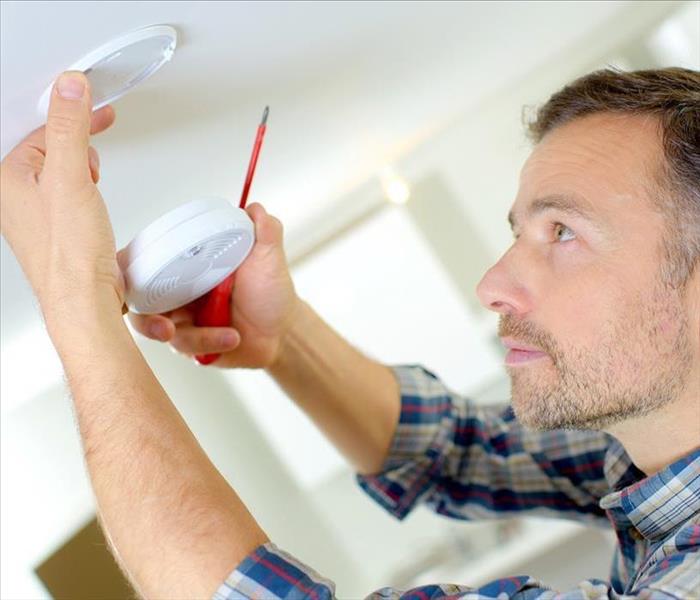 SERVPRO of Gordon, Murray, & South Whitfield counties is ready 24/7 to help you prepare for emergencies.
SERVPRO of Gordon, Murray, & South Whitfield counties is ready 24/7 to help you prepare for emergencies.
If you are hoping to improve your household fire safety, it can be overwhelming to know where to start. House fires are certainly dangerous, but given the multitude of ways they can start, understanding what fire prevention measures to take around the home can seem like it will be a daunting task.
Fortunately, fire safety is actually quite simple! By adding certain habits into your household routines, you can make major strides in reducing your likelihood of a fire and keeping your family safer.
Read on to learn more regarding where to start when improving fire safety in the home.
How to Begin Your Fire Safety Efforts at Home
**Start with your smoke alarms.** If you are new to fire safety efforts, starting with smoke alarms is really the best thing that you can do. Most people will have less than three minutes to escape when a fire begins in the home, but smoke alarms can ensure all members of your household are alerted quickly so they can begin evacuating. Make sure you have smoke alarms installed throughout each level of the home and in every sleeping area, and test them once per month to be sure they are operational and do not need a battery replacement.
**Create an escape plan.** As previously mentioned, being able to escape quickly is so important in the event of a house fire. It is wise to draft a fire escape plan for your home, and practice it with each member of your household at least every six months. Be sure that you are able to execute your plan in around two minutes, and that everyone knows where to meet up once they are safely outside.
**Consider your cooking habits.** Cooking is one of the most common causes of house fires, so evaluating your cooking habits can be a great way to prevent fires from starting. Be careful about flammable objects near the stove and leaving food unattended while cooking. Additionally, make sure that you have a fire extinguisher in the kitchen that is rated to handle cooking and grease-related fires.
*If you have damage to your home from a house fire, we are the team to call. We are here 24/7 to provide you with a rapid response. Get in touch today to learn more.*
Breaking Down the Fire Tetrahedron
2/2/2022 (Permalink)
 If your home or business has any damage, SERVPRO of Gordon, Murray, and South Whitfield Counties is ready around the clock to help you recover.
If your home or business has any damage, SERVPRO of Gordon, Murray, and South Whitfield Counties is ready around the clock to help you recover.
First things first, do you know the definition of a tetrahedron? To cut down on time, let us explain…it’s a three-dimensional, triangular shape with four equal sides.
Now that you know the basics of the geometric shape, let’s discuss what a fire tetrahedron is.
Basically, it’s a way of acknowledging that there are four components needed for fire to start—or four “sides” to the equation. If one of the sides is removed, the structure can’t stand and the fire can’t start.
The 4 Things a Fire Needs to LiveFuel. Fire, like people, needs fuel to keep going. It can be organic or inorganic, but there has to be some source of fuel for a fire to start, such as wood or plastic.
Heat. The amount of heat needed to start a fire varies from substance to substance. But you must have enough heat to cause combustion. Every object has a set point at which it will combust, melting or igniting.
Oxygen. Fire reacts with oxygen to produce a series of chemical reactions. In short, oxygen feeds the fire so that it can keep growing and generates products of combustion in the process.
Chemical Chain Reaction. The cycle of heat, fuel and oxygen combine to produce a chain reaction. This will perpetuate a fire as long as the chain reaction is undisturbed.
The 4 Ways to Stop a FireCool it. This is the most common method for extinguishing a fire, and the most common form of cooling is the application of water. Eventually, when dousing the flames with water, they reach a temperature below what’s needed to sustain a fire.
Smother it. If a fire doesn’t have access to oxygen, then it can’t live. To smother it, you must deprive it of oxygen. This can be a simple task like snuffing a candle, or it can be a little more difficult because it might need chemicals introduced.
Starve it. When a fire burns with no outside interference, it will likely burn until it runs out of adequate fuel. To be proactive, you should remove the fuel source while the fire is still trying to consume it.
Interrupt the chain reaction. Chemical agents can effectively disrupt a chain reaction and put a fire out. One chemical agent that is very effective is halon, but it has an elevated potential for ozone depletion, making it an environmental threat.
If the fire tetrahedron makes a wreck of your home or business, we’re ready around the clock to help you recover. Contact SERVPRO anytime for fast, thorough cleanup and recovery after a fire.
Fires on Construction and Renovation Sites
1/31/2022 (Permalink)
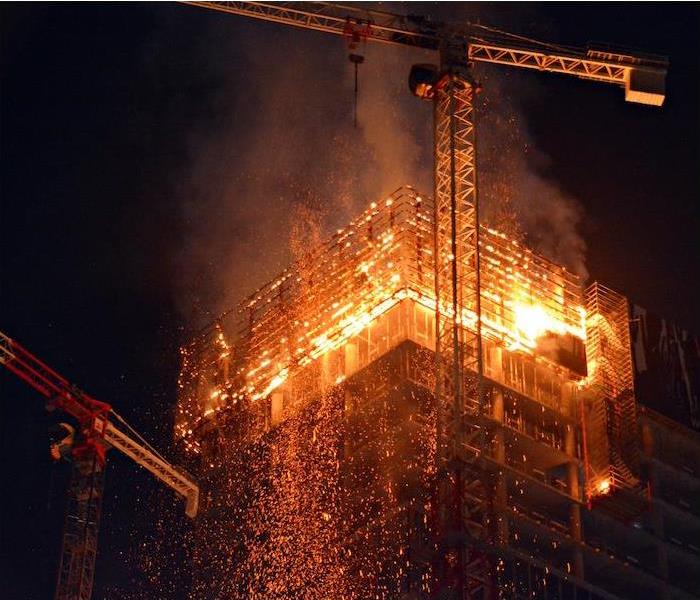 If your construction project should be hindered by an unfortunate fire, contact SERVPRO of Gordon, Murray, and South Whitfield.
If your construction project should be hindered by an unfortunate fire, contact SERVPRO of Gordon, Murray, and South Whitfield.
A 2020 report by the National Fire Protection Association gives us insight into the most common fire dangers of unfinished properties. Some of these properties are in the construction phase, and some are undergoing major renovations. The published results are the culmination of a five-year study, looking at fires of this nature from 2013–2017.
These details serve to encourage adoption and adherence to NFPA standards and codes while building and renovating, in order to avoid the added cost and time of dealing with fires as a result of code violations.
The top three causes of construction and renovation fires are in a virtual tie for occurrence percentage, though their resulting damage varies. Electrical failure or malfunction causes 15% of construction fires, while another 14% each come from abandoned or discarded materials and heat sources too close to combustible materials.
Electrical malfunction also causes 16% of civilian injuries in these types of fires, while discarded material and combustion from heat sources cause 6% and 19%, respectively. Also of note is that fires caused by heat sources being too near to combustibles causes almost one fifth of all direct property damage from construction fires.
There are a few other causes of significance, though none with quite the impact of the top three. These include welding and cutting in close proximity to flammable materials or objects, unattended equipment, failure to properly clean work areas and various misuses of materials. The combination of these add up to 26% of construction fires and 27% of civilian injuries, but only 11% of property damage from fires on construction sites.
Adherence to fire codes and proper methodologies could prevent most of these unfortunate fires, and while it’s not always the most convenient way to do this, following these well-researched, thoughtfully crafted prevention codes is the safest way to manage any construction or renovation project.
Considering fire agencies respond to more than 6,000 construction fires alone each year, this report shows us that we’ve still got some ground to make up when it comes to proper fire safety methods.
If your construction project should be hindered by an unfortunate fire, we’re here to help, regardless of the cause. Contact SERVPRO of Gordon, Murray, and South Whitfield. to find out how we can help you get back on track.
Why You Should Trust SERVPRO With Your Fire Damage Recovery
1/21/2022 (Permalink)
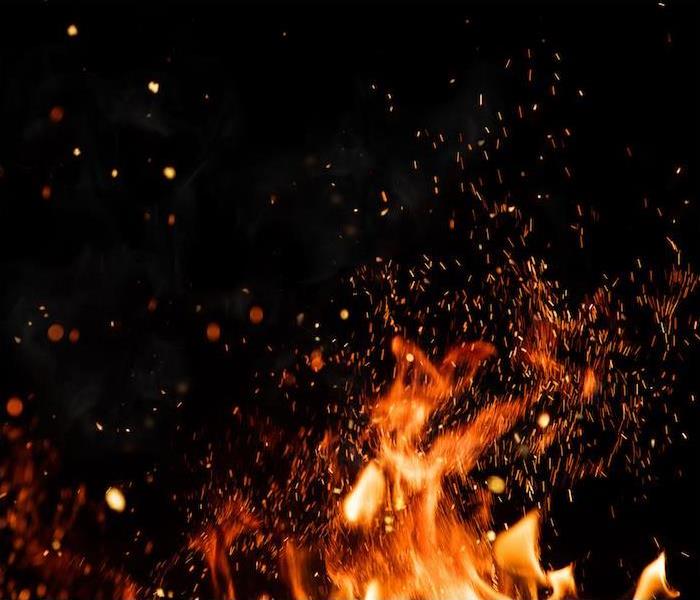 SERVPRO of Gordon, Murray, & South Whitfield Counties is your local fire restoration expert. No job is too big for our team of experts.
SERVPRO of Gordon, Murray, & South Whitfield Counties is your local fire restoration expert. No job is too big for our team of experts.
Dealing with a fire is one of the most taxing things a homeowner could possibly imagine.
Fire causes all kinds of damage in your home, and recovering from a home fire encompasses dealing with physical, financial, emotional and mental recovery.
While SERVPRO of Gordon, Murray, & South Whitfield Counties can’t help with all these areas, we can be your main source of property recovery and restoration. And we can get your home taken care of quickly, which can in turn aid in your emotional recovery as well.
Here’s why you know you can feel good about entrusting your fire recovery to us.
We’re Established.
We’ve been doing this a very long time. SERVPRO was established the same year Thurgood Marshall was appointed to the Supreme Court, if that gives you any idea.
That means we’ve got over 50 years’ experience helping families and homeowners deal with the effects of fire, and we’ll use all those years of innovation and experience to give you the most complete recovery possible.
We’re Skilled.
SERVPRO of Gordon, Murray, & South Whitfield Counties employs a team of experts, trained and equipped to handle anything fire may have done to your home. From reversing the effects of smoke damage to full-blown rebuilding efforts, we have the tools and work ethic to get it done.
We’re always up to date on the latest technologies, innovations and certifications, which multiplies our capacity for tackling even the toughest recovery projects.
We’re Very Fast.
When you click this link or call (706) 278-7378, you’re getting connected with a local team who can be onsite right away to get started.
You don’t have to wait for a team from somewhere else to mosey up to Calhoun, Chatsworth, or Dalton—no, we’re right here in Dalton which means when you need us, we’re the quickest option for your recovery. And we’re on call 24 hours a day, seven days a week to take your emergency call.
When fire strikes at home, the choice is clear: SERVPRO of Gordon, Murray, & South Whitfield Counties is the name you can trust with your recovery and restoration.
If fire or other disasters do damage to your home, we’re here to make things right again. Contact us today to get fast, local recovery started on your property right away.
Decorate Safely!
12/20/2021 (Permalink)
 SERVPRO of Gordon, Murray & South Whitfield Counties wish you all a save and happy holiday season!
SERVPRO of Gordon, Murray & South Whitfield Counties wish you all a save and happy holiday season!
Pretty lights, candles, and decorations are just a few of the items bringing charm and cheer to the holiday season - however, if they are not used carefully, your holidays may go from festive to frightening. The American Red Cross offers the following safety tips to help greatly reduce the fire risk in your home or business this holiday season:
?Place Christmas trees, candles, and other holiday decorations at least three feet away from heat sources like fireplaces, portable heaters, radiators, heat vents, and candles.
?Make sure light strings and other holiday decorations are in good condition. Do not use anything with frayed electrical cords and always follow the manufacturer's instructions.
?Always unplug tree and holiday lights before leaving the property or going to bed.
?Never use lit candles to decorate a tree. Always extinguish candles before leaving the room or before going to bed.
?Use only sturdy tree stands designed not to tip over. Keep curious pets and children away from Christmas trees.
?Keep anything that can catch on fire - like pot holders, oven mitts, wooden utensils, paper or plastic bags, food packaging, and towels or curtains - away from your stove top.
?Designate one person to walk around your home or business to ensure all candles and smoking materials are properly extinguished after guests leave.
Your local SERVPRO franchise professionals wish you all a save and happy holiday season!
Deep Fried Turkey Safety Tips
11/19/2021 (Permalink)
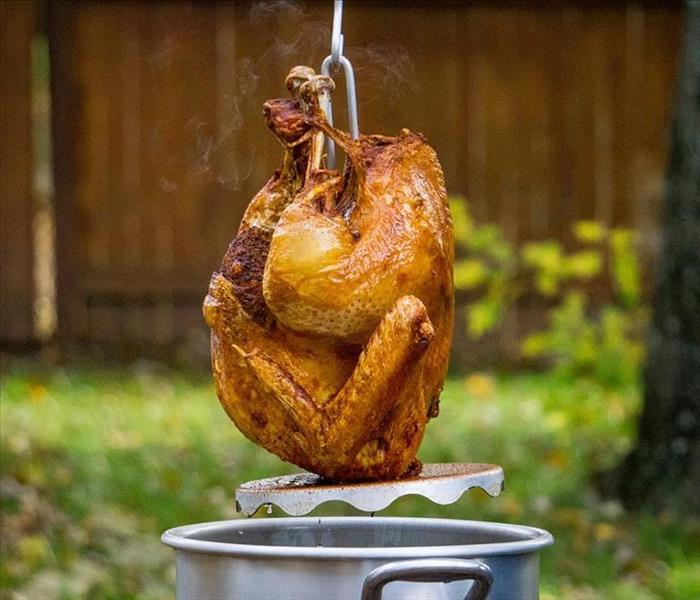 Practice proper caution when cooking this holiday season. Keep SERVPRO of Gordon, Murray & South Whitfield Counties on speed dial - 706-278-7378.
Practice proper caution when cooking this holiday season. Keep SERVPRO of Gordon, Murray & South Whitfield Counties on speed dial - 706-278-7378.
Deep Fried Turkey has become a wide spread delicacy this time of year. Many famous chefs have stated that deep frying a turkey is a quick method of cooking that provides a crispy and flavorful bird.
However, deep frying a turkey is a more dangerous way of cooking. Having gallons of hot cooking oil over an open flame can be a recipe for disaster. The National Fire Protection Association discourages the use of outdoor, gas-fueled deep fryers due to their risk of injury and damage to your property.
If you still choose to use a deep fryer for your holiday feast, please follow the following safety measures provided by the National Fire Prevention Agency:
• Set up your deep fryer on a flat surface, more than 10 feet away from any structures.
• Make sure your turkey is completely thawed and dry before slowly placing it in the hot oil.
• Do not leave the fryer unattended. Continuously monitor the temperature of the oil.
• Protect yourself. Lids and handles can become very hot and cause burns. Wear proper personal protective equipment.
• Have a fire extinguisher ready at all times. A multipurpose, dry-powder unit is best. Be sure to keep children and pets away from the area while cooking.
*Restoration Newsline Vol 32, Iss 11
Know Your Smoky Situation!
11/2/2021 (Permalink)
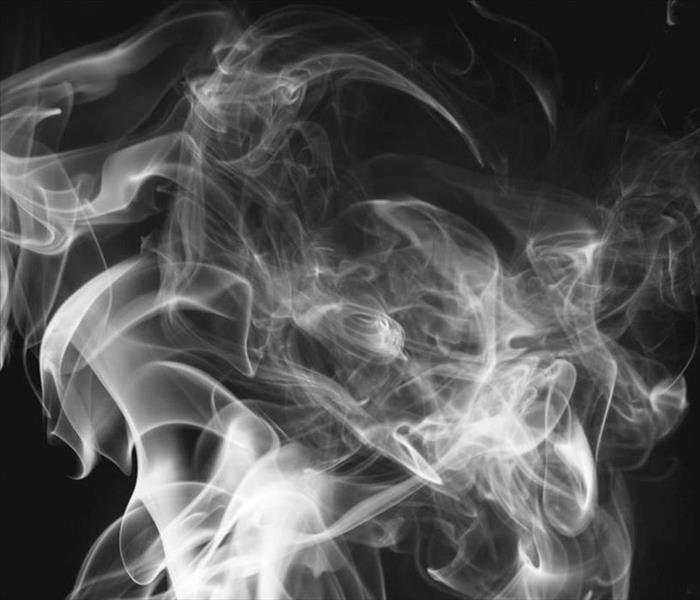 Trust the experts at SERVPRO of Gordon, Murray & South Whitfield Counties to clean up smoke damage in your home or business.
Trust the experts at SERVPRO of Gordon, Murray & South Whitfield Counties to clean up smoke damage in your home or business.
Fall time usually means more family time. Whether cooking s'mores over a fire pit, getting the turkey cooked for dinner or smoking up some wings, the one by-product of all fires is smoke. Along with these activities, the risk of fire damage to homes increases as well.
There are two different types of smoke: wet and dry. As a result, there are different types of soot residue after a fire.
SERVPRO® of Gordon, Murray, & South Whitfield Counties professionals are thoroughly trained in fire clean up and restoration. It's important to know the different type of smoke that could affect your property:
• Wet Smoke (Plastic and Rubber). Low heat, smoldering, pungent odor, sticky, and smeary. Smoke webs are more difficult to clean.
• Dry Smoke (Paper and Wood). Fast-burning, high temperatures; heat rises, therefore smoke rises
• Protein Fire Residue (Produced by evaporation of material rather than from a fire). Virtually invisible, discolors paints and varnishes, extreme pungent odor.
• Fuel Oil Soot (Furnace puff backs). While “puff backs” can create havoc for homeowners, SERVPRO® of Gordon, Murray & South Whitfield Counties can, in most cases, restore the contents and structure quickly.
• Other Types (Tear gas, fingerprint powder, and fire extinguisher residue). Special loss situations require special care.
*Restoration Newsline Vol 32, Iss 11
What Kind of Smoke Alarm Should I Install?
9/21/2021 (Permalink)
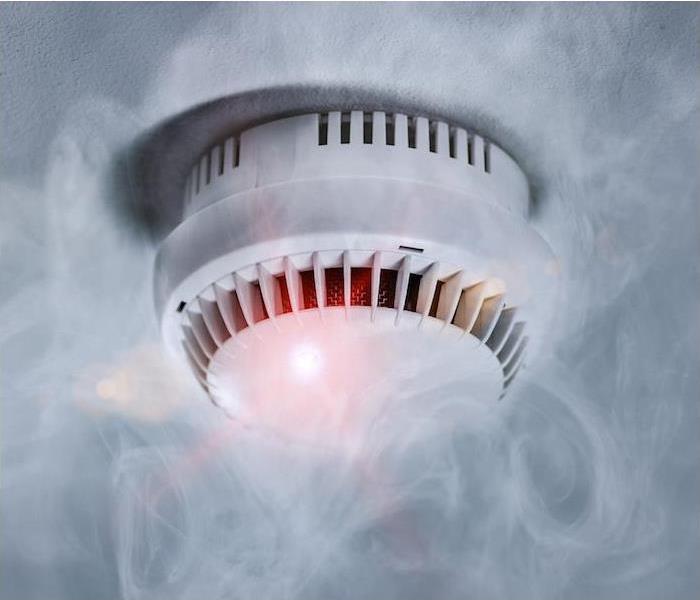 If your home should become damaged by fire, contact SERVPRO of Gordon, Murray and South Whitfield Counties. We are your local restoration company.
If your home should become damaged by fire, contact SERVPRO of Gordon, Murray and South Whitfield Counties. We are your local restoration company.
Fire safety is critical for homeowners. Your home is so full of important things that neglecting fire safety can be tantamount to failing to protect your loved ones, not to mention all the memories and memorabilia you’ve worked so hard to make and acquire.
That’s why smoke detectors are recommended (and in some cases, mandated) for every home, or even every bedroom.
But did you know there are two main types of traditional smoke detectors? It’s true, and each type focuses on a different indicator before it sends an alert.
So what are they, and which should you choose for your home?
Photoelectric Smoke Alarms
Photoelectric alarms use light to detect fire threats. They have an LED light inside, which shoots a light beam into a light-sensing chamber. When the beam is interrupted by smoke or particles, the light is refracted to a different area of the chamber, striking a photosensor that triggers the alarm mechanism. Photoelectric alarms are typically better at sensing smoldering fires, such as fires caused by smoking materials left unattended, which create a large amount of smoke.
Ionization Smoke Alarms
Ionization alarms actually house a minor amount of radioactive material which causes air between two electrodes to ionize, meaning the air itself becomes electrically charged. When smoke enters the alarm chamber, it decreases the current as it disrupts the flow of ions between the plates, and when the current is reduced, the alarm sounds. This kind of alarm is better at sensing fast-flaming fires, such as those caused by ignition of flammable liquids, grease or anything that creates lots of flames with smaller amounts of smoke.
So which is right for you? Truthfully, it’s best to be aware of any kind of fire, so the best solution is to either install both kinds of alarms, or to install a modern alarm that combines these technologies to detect both smoldering fires and fast-flaming fires.
If your home should become damaged by fire, no matter the source or fire type, SERVPRO of Gordon, Murray and South Whitfield Counties is equipped to restore your home to its original state. Call or click today to find out more.
Deep Fryer Safety
7/26/2021 (Permalink)
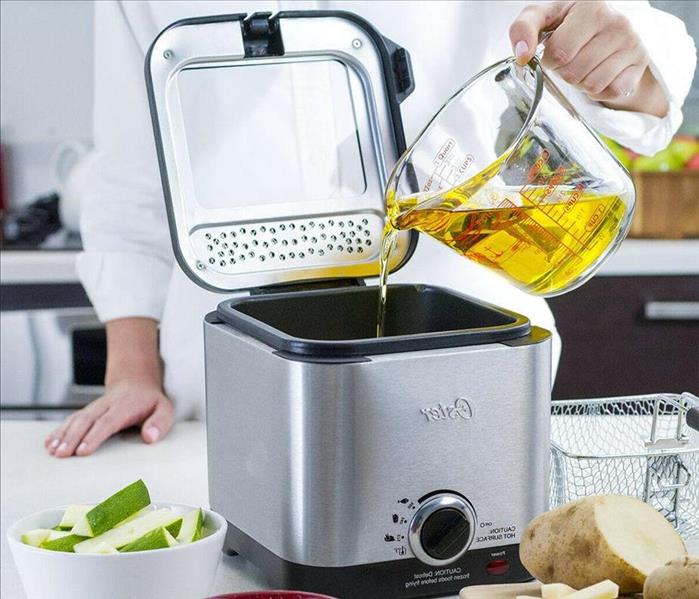 Should you find yourself faced with a kitchen fire, trust the experts at SERVPRO of Gordon, Murray, & South Whitfield Counties.
Should you find yourself faced with a kitchen fire, trust the experts at SERVPRO of Gordon, Murray, & South Whitfield Counties.
Here in the south, fried foods are a necessary food group. It's as essential to our way of life as sweet tea. Frying foods at home is much easier thanks to residential deep fryers. So if you find yourself hankering for some fried chicken or veggies, following these tips to ensure you don't need to call the fire department or SERVPRO.
*Know your oil smoke point. Each type of cooking oil has it's own smoke point. This is the temperature that your oil begins to smoke and could catch fire.
*Don’t overfill your deep fryer. Most deep fryers have a max fill line. What most people don't account for is that this should include the food, not just the oil. Overfilling your deep fryer could result in spilling oil and causing a fire and uneven cooking due to the oil temperature dropping.
*Do not deep fry wet food. Water can cause hot oil to splash and spill over potentially resulting in a fire. Most frozen foods are already mostly dry, but fresh foods can contain a lot of moisture and need to be patted down before putting in hot oil.
*Keep your deep fryer in clear surroundings. Many deep fryers aren't cool to the touch when cooking. Make sure the are around your deep fryer is free from flammable and combustible materials.
*Make sure your deep fryer has a break-away cord. This is a standard safety feature on most home deep fryers to keep the fryer from tipping over if the cord is tripped up by something or someone. However, not all have this so inspect yours and use accordingly.
*Have a lid on hand. While not necessary, smothering is the safest way to put out a grease fire. If your deep fryer doesn't come with a lid, find something you can use that will work just as well.
*Keep a fire extinguisher handy. There are many people who've never thought to have a fire extinguisher in their kitchen in case of a fire. There are many options available for a fire extinguisher made for home use, so make sure you have one to on hand in your kitchen.
*Keep track of your temperatures. Many deep fryers have a built in temperature gauge to track how hot your oil is and make sure your fryer is cooking at the proper heat. These can malfunction so having a separate clip-on thermometer as a back up is a great idea.
*Dispose of oil properly. Always let the oil cool down completely before storing or disposing of it. If storing, make sure to filter out all food particles so your oil doesn't spoil prematurely. If disposing, make sure to pour into a air tight container. Never pour oil down a drain as it can cause the drain to clog and back up.
*Use proper protective equipment. Most foods won't splatter as long as excess moisture is removed, but fatty foods like bacon will splatter regardless. Using the handle on the fryer basket will protect you, but having protective gloves as secondary protection is always a good idea.
Should you find yourself faced with a kitchen fire, trust the experts at SERVPRO of Gordon, Murray, & South Whitfield Counties to help you make it "Like it never even happened."
*Source: Deep Fryer Safety Tips
 You can count on SERVPRO of Gordon, Murray, & South Whitfield Counties to help you recover after a house fire.
You can count on SERVPRO of Gordon, Murray, & South Whitfield Counties to help you recover after a house fire.



 24/7 Emergency Service
24/7 Emergency Service














